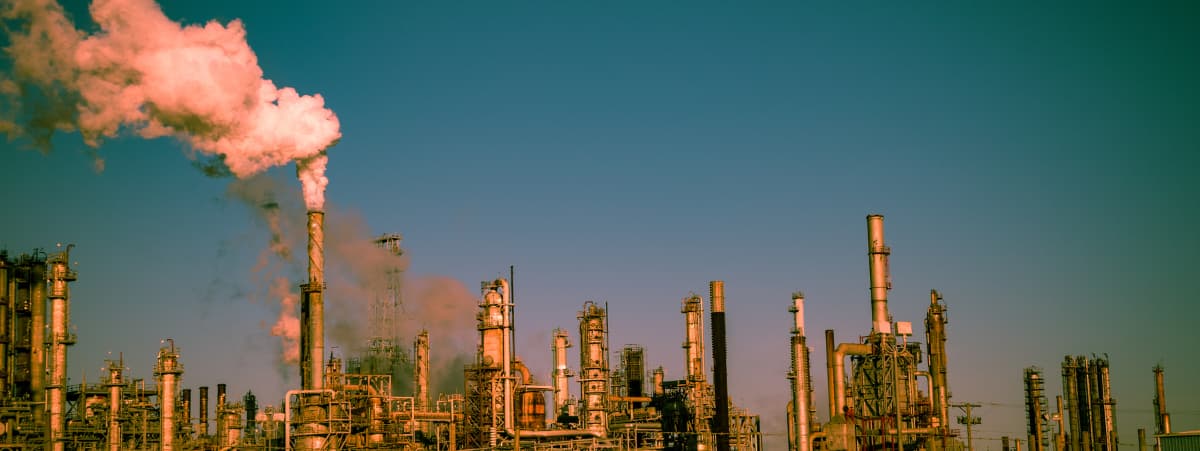In order to tackle the climate crisis, it’s important to determine priorities. These are the world’s most polluting industries – those it is crucial to decarbonize if we are to meet our climate goals.
By now, we all know greenhouse gases are responsible for global warming and the destabilization of our climate. The Intergovernmental Panel on Climate Change (IPCC) regularly reminds us of the urgency of reducing carbon emissions to avoid the worst impacts of the climate crisis. But what should be our priority?
Identifying the world’s most polluting sectors is a sure way to make the biggest dent in emissions in the shortest time frame.
What does it mean to be ranked as most polluting?
Being ranked as the most polluting signifies that a particular industry or sector holds a prominent position in terms of emitting greenhouse gases (GHGs) and contributing significantly to the global carbon footprint. This ranking indicates that the operations within that sector release a substantial amount of carbon dioxide and other pollutants into the atmosphere, exacerbating climate change and environmental degradation. Essentially, it reflects the industry’s impact on the planet’s health and underscores the urgency to implement sustainable practices and reduce emissions.
More on this topic: What are carbon emissions scopes?

Top polluting Industries
1 – Fossil fuels – It is no surprise that the fossil fuels sector is the most polluting in the world. Despite this knowledge, emissions from fossil fuels keep increasing. After a brief decline during the Covid 19 pandemic, they grew by 1% in 2022, reaching 40.5 gigatons of CO2.Shifting our energy sources from coal, oil and gas to renewable power such as solar and wind is necessary to stabilize our climate. Here are the countries that are leading the energy transition.
However, the fossil fuels sector is currently under scrutiny, prompting companies to accelerate their environmental strategies. A key initiative involves the use of carbon credits to achieve immediate impact—essentially offsetting a portion of emissions by supporting projects such as reforestation and renewable energy plants. Check here “Everything You Need to Know About Carbon Credits.”
2 – Agriculture accounts for about 11% of greenhouse gas emissions. According to the Food and Agriculture Organization (FAO), global emissions due to agriculture were 9.3 billion tons of CO2 equivalent (CO2eq) in 2018, led by methane and nitrous oxide emissions from crop and livestock activities.
There are several ways to tackle greenhouse gas emissions from agriculture. First, it is crucial that the world starts eating less meat: livestock production processes are the biggest culprit in farm emissions, generating 4 billion tons of CO2eq in 2018 and causing widespread deforestation. Second, regenerative agriculture, sometimes known as carbon farming, offers a more sustainable way to produce food while sequestering more carbon in the soil. Azolla Projects and ClimateTrade are currently developing Spain’s first EU-aligned carbon farming project.
3 – Fashion, the third most polluting industry and produces about 10% of our annual carbon footprint – more than all international flights and maritime shipping combined! And GHG emissions are not the only problem with the fashion sector: it also consumes enough water to quench the thirst of five million people every year, and creates millions of tons of plastic and other waste that pollute our air and oceans.
The solution is simple: move away from fast fashion, buy fewer but better quality pieces of clothing, and opt for sustainable brands that disclose their environmental impact transparently and act to reduce it.
Other polluting industries
4 – Food retail includes the activities from markets, supermarkets and restaurants selling food to consumers – and most of this sector’s emissions come from food and plastic waste. It is estimated that food waste alone represents 8 to 10% of global GHG emissions. In the EU, 57 million tons of food is wasted every year: that’s 127 kg per inhabitant! Programs that collect leftover food from supermarkets and restaurants to distribute for free or at a discount are a great way to reduce emissions. For example, France introduced a law in 2016 forbidding supermarkets from throwing away food. Instead, they are required to donate leftovers to associations, who then redistribute them to people in need.
5 – Transport is responsible for about one-fifth of GHG emissions. About 40% of these come from the transportation of merchandise, while the rest (60%) come from passenger travel, led by air travel. Electric vehicles, alternative fuels and initiatives like the Carbon Offsetting and Reduction Scheme for International Aviation (CORSIA) are helping to decarbonize this sector.
Other impactful solutions include the advancement of sustainable fuels like SAF for the aviation industry and the integration of climate APIs into freight booking processes, involving companies that hire transportation services to actively address emissions in the freight sector. Discover how DP World is spearheading transformative initiatives in the transportation sector.
6 – Construction Taking into account the extraction and transportation of building materials, construction processes and everyday operations buildings are estimated to emit about 40% of global emissions.
To guide the construction sector toward achieving net-zero emissions, it’s essential to explore avenues such as adopting more sustainable materials and methods, improving energy efficiency, and offsetting residual emissions. Delve into these topics by downloading the white paper developed by ClimateTrade. You can access it here








